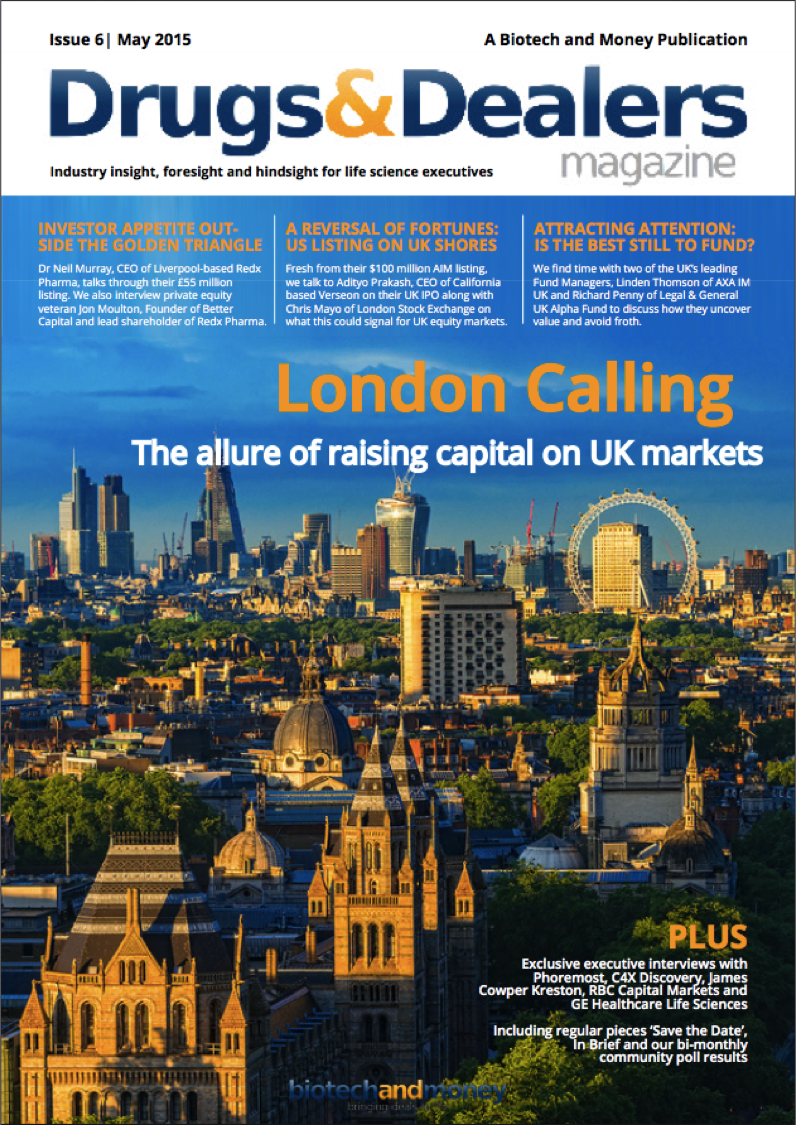What Pharma want: Anatomy of a life science deal
Quality sites
- Online Casinos UK
- Casino Non Aams
- Casinos Not On Gamstop
- UK Casinos Not On Gamstop
- Best UK Casinos Not On Gamstop
- Casino Sites Not On Gamstop
- Casino Sites Not On Gamstop
- Casino Sites Not On Gamstop
- Non Gamstop Casino Sites UK
- Non Gamstop Casinos
- Best Online Casino Canada
- Casino Sites Not On Gamstop
- Non Gamstop Casino UK
- UK Online Casinos Not On Gamstop
- Best Slot Sites 2025
- Casinos Not On Gamstop
- Meilleur Casino En Ligne
- Non Gamstop Casinos
- Slots Not On Gamstop
- Non Gamstop Casino
- New Online Casinos Not Registered With Gamstop
- Casino Non Aams Sicuri
- Casino Sites UK Not On Gamstop
- Casino Non Aams Italia
- Bitcoin Casino
- Meilleur Site Casino En Ligne Belgique
- Migliori Siti Scommesse Non Aams
The following transcript comes from What Pharma want: anatomy of a deal, a group discussion at February’s Biotech and Money London 2015 congress.
Chairwoman and Panelists:
Surani Fernando, Deputy Editor / Acting Editor, EMEA, BioPharm Insight (SF), Kevin Johnson, Partner, Index Ventures (KJ), Ajan Reginald, CEO, Cell Therapy Ltd. (AJ), Beverley Carr, VP, Business Development, Immunoinflammation Therapy Area, GSK (BC), Jane Dancer, CBO, F-Star (JD)
Talking Points:
How has M&A been brought earlier into the R&D lifecycle?, M&A vs. IPO decision making: when and why should you opt for a trade sale, How to best structure and optimise an M&A deal for mutual benefit?, How is risk affecting deal making decision in the current climate?
SF: We saw the spike in M&A activity last year, why M&A, with all the other options that you’ve got on, why would you go M&A and when would you pull the trigger? Early/Late stage, there’s a lot of debate there. A lot of different strategies being taken.
KJ: I’d say from the venture side we’re seeing a couple of trends. One is we’re having our companies tracked far earlier in the piece than we have done before. So we’ve had companies that really not many people outside of a very small sphere know exist, because there’s no reason to put out press releases all the time. But none the less they are being tracked, and tracked fairly aggressively. Not only by big pharma but more increasingly now by the big biotech’s.
So if you got any pharma or biotech presentation there’s always a slide in there somewhere that points to where they’re going to source their innovation. There’s usually a big chunk of it that’s got to come from outside. I think you know given that everyone has that same drive, then you know the tracking becomes much more aggressive. So we’re seeing stuff that’s coming in very much earlier at the piece, even at the seed level. So which is fairly unexpected and unusual.
The second thing that we’re seeing is that of the type of deal, whether it’s an option structure or whether it’s a full take out, and that’s generally driven by competition. So if at very early stages when there’s so much ahead of you you’ve obviously got some optionality in that deal, it would be very difficult for it to be otherwise. But largely it’s down to how many interested parties there are. That in our view drives almost completely what kind of deal structure you’re looking at.
JD: From the biotech side, what drives M&A for us, we’re a company that is now 9 years old, so we’ve obviously got VC’s who have funded us for some time now. So biotechs like us face a challenge. Companies like ours which are platforms leading to products will often be under pressure from some of their investors to exit, they need their money back. This can result in perhaps sub-optimal valuations, unless you can get as Kevin says the competitive pressure.
So what we’ve done to try and resolve that conundrum is to tease apart the company. So we had a programme that was entering the clinic, we were able to put that in a separate company, get an option to acquire for that so as to provide an early exit on that for investors. So it keeps the wolf from the door, you throw them a bone and they’ll be a bit more patient about what we do with the rest of the company.
SF: On the topic of risk, what are we seeing in terms of contingent value rights, are we seeing more of them now, are they sort of a bit more structured? What’s your experience with CVR’s in deal making?
JD: I would have said that the difference between an acquisition and a licencing deal is becoming a bit blurred, because you actually see acquisitions now that not only have milestones buy royalties attached to them. I think probably the earlier stage the asset the more likely of course you’re going to have to have the contingent rights.
The deal we’ve done is an option to acquire. So they’ve paid an upfront option and then they will pay an exercise fee and there are some contingent earn outset after that. Obviously we want as much up front as possible and they want to defer as much as possible, and that’s part of the negotiation.
SF: Are there other ways to bring the M&A process earlier into the cycle? Because we all know the standard traditional model is to wait for something de-risked and something closer to the market and buy it then. But it’s expensive and there is lots of competition. Obviously you have to be vigilant on sourcing these assets, but are there other ways to get M&A into the process early on?
BC: So contingent value rights are not so easy for GSK, which is a function of us being a UK accounting company. This is the third panel I’ve been on with Jane where we have this, and Kevin as well, where we have this dialogue about asset centric vehicles. They don’t work so well for us because of the way we have to account for deals. What we like still is of course sharing the risk downstream. So we like upfront milestones and royalties. If something is competitive and we really want it of course we’ll beflexible in terms of the deal structure. But an earn out in itself brings us quite a lot of internal challenges because of the way we are structured and the way the accounting works. So we kind of like licencing deals.
KJ: If I could just say, to some extent it depends whether you can afford that luxury. That’s really what it boils down to. A lot of what we’re seeing now, and I’d say this is another trend certainly we see in the venture industry, is that we’re doing a lot more funky stuff now. It’s ideal. You know what it is. You know what the market is going to look like. You know what the development track is going to look like. You can join the dots, that’s ideal.
I think that the tolerance of risk is I think increasing, simply because everyone knows that’s the case. You can’t simply go and stick with your knitting, you have to actually do something that is challenging. If you think you have an alternative, you’re deluding yourself, you actually don’t.
AR: I think that is interesting to think about. So everyone is going towards one trend, which is you’ve either got to be best or first. There’s only, in each therapeutic niche or indication you’ve only got room for two players, both from a reimbursement perspective but from a kind of pharma return on investment perspective.
So ideally if you’re first, and best, or could be best, then you’re acquisition target. If you’re second then you’ve got some other options. But I think we are thinking about this from what pharma want, and I think as everyone has pointed out, all the deals I did there were at least 4 of the pharma companies in there. I don’t think we ever did a deal that nobody else wanted to do.
Whereas I think about all the technologies that me being more risk seeking obviously, because I’m now in biotech, wanted to do that we didn’t do only one other company picked them up. So I think for the stuff that fits pharma’s target product profile, relatively known target, with some clinical data, in an indication they’re interested in. If you’ve got all those three things of course everyone is going to be interested in it. So I think you can push that competitiveness towards and M&A if you wanted. If you’ve got that. If you haven’t got that target product profile you have to be realistic, you’re going to end up with a licencing deal.
SF: There has been a lot of criticism, especially with the mega mergers, where a lot of deals have happened where that hasn’t been executed properly. A lot of the R&D aspect just goes down the drain. Obviously the big pharma, the bidder, sees something that they want and then forgets about the expertise that is needed to generate everything else in the pipeline. I guess that rings true for the smaller biotechs coming through as well.
AR: I think in the end we’re talking about optionality. So how do you as a biotech company or you as an investor or a fund manager maintain that optionality where you can get the optimal deal running? I think in the end it has to go down to something as simple as target product profile.
So all the stuff we’re talking about, Roche held Genentech within an arm’s length, managed the R&D for about 20 years. But that’s a nice to have, if you’ve got great technology. I think if you’re a biotech company even if you’ve got a platform, we’ve got a platform technology, you need to have a product with the right target product profile. If you
haven’t got that actually the rest of it is mute. I think the dream scenario is you have the right product, profile, you have a platform technology with something unique which can get first to market or best in class. Then you have a culture, I don’t know what that is, a culture that they’re looking for. So you’ve got something new, innovative, what they want.
I think there’s a lot of pharma companies that are really good at acquisitions and they’re really good at stripping away everything, and they just keep the technology.
I think all of the big pharma companies now talk about not wanting to acquire, wanting to broaden their technology base, bringing in new diversity of thought etc. But I think if you’ve got the right target product profile, if you’ve got something that they can value easily, that’s the key thing. A target product profile converts into a DCF or a valuation that everyone can understand. So then you get your competitive pressure. Then you can work out the right deal structure. If you haven’t got that, then the conversation can’t even start.
SF: Looking at what we saw last year, which was the therapeutic deal swap between GSK and Novartis. Everyone is wondering is this the way to move forward for big pharma now?
BC: Looking back over history, most pharma companies did most therapy areas. Perhaps we are moving into a phase where companies are being a bit more focussed. So you’ve got AstraZeneca being very clear about their areas of focus, and the areas which they are de-prioritising. Likewise the GSK Novartis deal is very clear about our investment in vaccines, building our investment in vaccines, building our investment in consumer and then within pharmaceuticals clearly we’re still a very big player in respiratory and in infectious disease. The oncology portfolio is a specific part of the deal where we figured potentially you could get more commercial value for those products from Novartis selling them as part of this construct rather than GSK. It doesn’t mean we’re out of oncology, we’re still very much in early stage oncology, but that changes a little bit how we do things in oncology. But we will still be making a lot of investments actually in early stage, particularly immune oncology and epigenetics.
Will we see more of them? I don’t know. It’s a hugely complex deal to move all of those people, all of those products, marketed products, developing products around. So you can’t bite off too many of them.
SF: What’s the biotech response to that? Was that refreshing thing that pharma was doing or a little bit scary?
JD: I think it’s a little bit confusing. Because we’re an oncology company and so then you wonder whether GSK is a partner of choice if you want to do an early stage oncology deal, when they don’t have a commercial oncology organisation. So I think that’s the challenge.
So if you’re going to hand your best loved lead programme over to them there might be other partners out there you might want to go to. So it is a little confusing from the outside.
KJ: I always thought it was a lot easier to build a sales force around a particular area than it was to find a great drug in a particular area. I don’t really understand this whole drive from the marketing end. Well I do understand it but I don’t agree with it, because actually it’s so hard to find the stand out drugs. It is a real mission. And it is why we don’t have a therapeutic focus. We just look for something outstanding, and we don’t give a shit where it sits. We’ll work that out.
It always strikes me that is much harder to do. Because everyone is stealing everyone else’s sales reps all the time and you know if you’re spending 40% of your budget on marketing, sure as hell you can work out how to market a new drug in a new area.
JD: I think maybe coming more from the biotech perspective where if you haven’t got the commercial experience sometimes it’s difficult to make the right decisions and identify the stand out drugs. Obviously you guys have got a lot of experience with that. But do you lose something by not having that in the market.
KJ: I honestly don’t think you do. It’s hardly beyond the wit of man. You hire some guys who know what they’re doing, you go poaching just like every other area. There was a reason why you’re in a particular therapeutic space in the first place, you know that’s going to be driven by an understanding of a small group of people. So it’s fairly easy to recapitulate that.
You look at some of the big biotech companies now, they’re really clamouring at the heels of big pharma, and actually overtaking them in some cases on market cap. They’re basically just going for it, right, they’ve generally got one product there that has put them where they are and now they need to diversify. And they’re just going and getting what they need. It’s quite refreshing actually.
So back to the original point, is this a surprising deal, no I don’t think it is. It’s just recognising what you’re good at.
Additional group discussions from the event, plus interviews, insights and articles, can be found in the latest edition of our Drugs & Dealers magazine.






Leave a comment